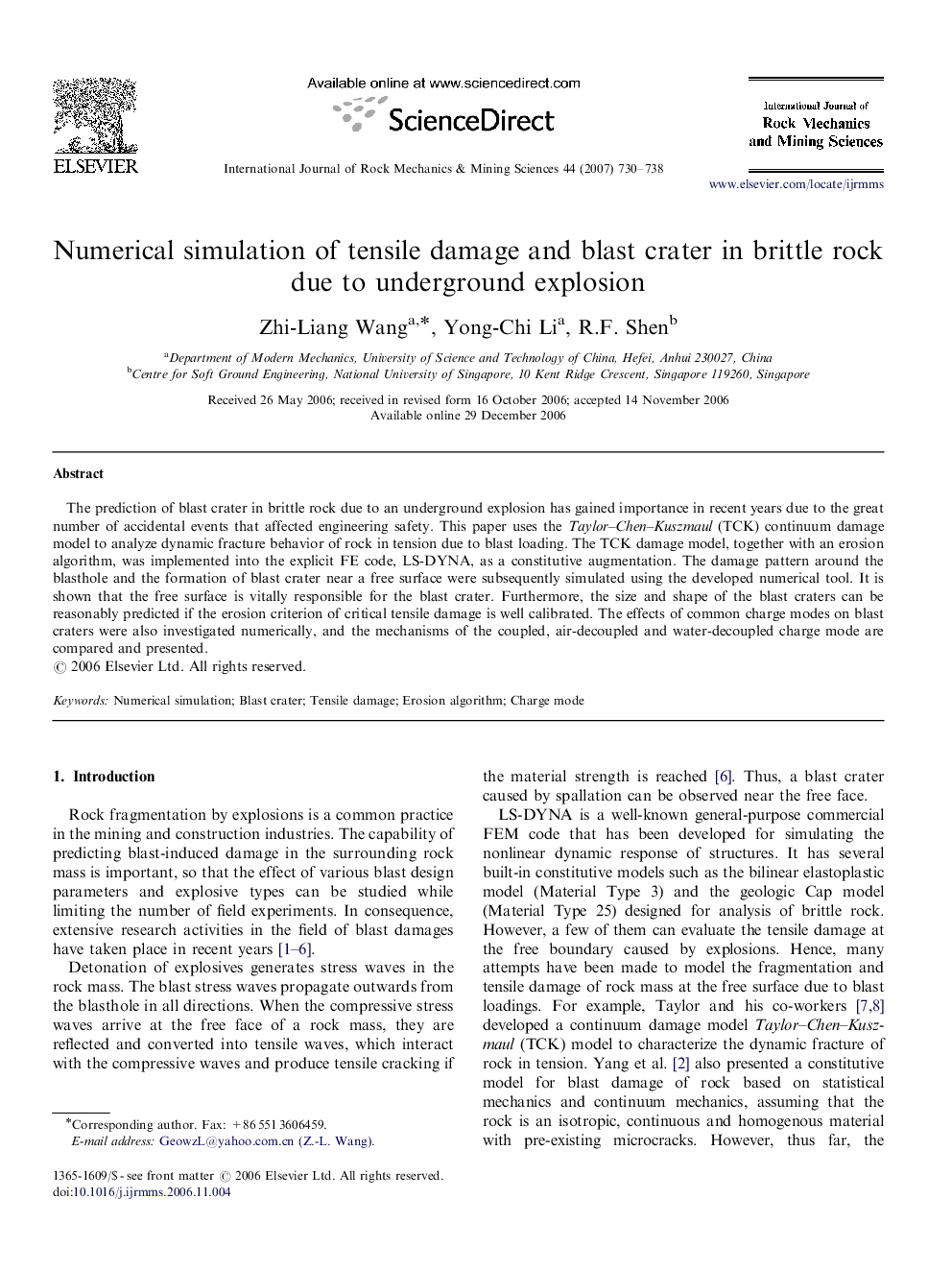| Article ID | Journal | Published Year | Pages | File Type |
|---|---|---|---|---|
| 810198 | International Journal of Rock Mechanics and Mining Sciences | 2007 | 9 Pages |
The prediction of blast crater in brittle rock due to an underground explosion has gained importance in recent years due to the great number of accidental events that affected engineering safety. This paper uses the Taylor–Chen–Kuszmaul (TCK) continuum damage model to analyze dynamic fracture behavior of rock in tension due to blast loading. The TCK damage model, together with an erosion algorithm, was implemented into the explicit FE code, LS-DYNA, as a constitutive augmentation. The damage pattern around the blasthole and the formation of blast crater near a free surface were subsequently simulated using the developed numerical tool. It is shown that the free surface is vitally responsible for the blast crater. Furthermore, the size and shape of the blast craters can be reasonably predicted if the erosion criterion of critical tensile damage is well calibrated. The effects of common charge modes on blast craters were also investigated numerically, and the mechanisms of the coupled, air-decoupled and water-decoupled charge mode are compared and presented.
